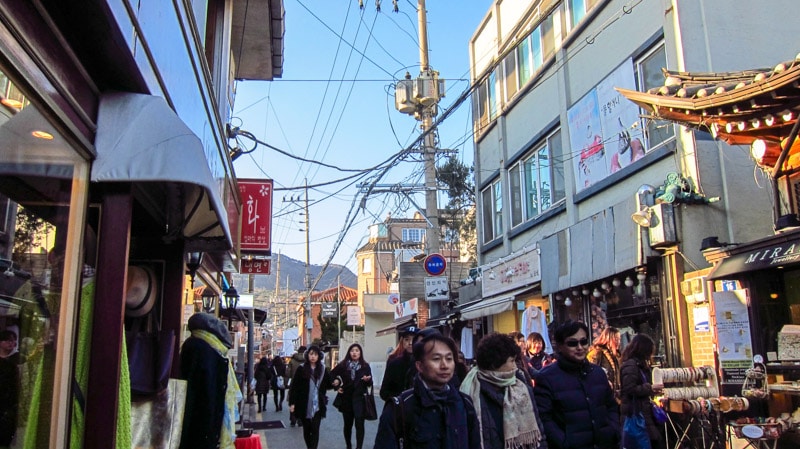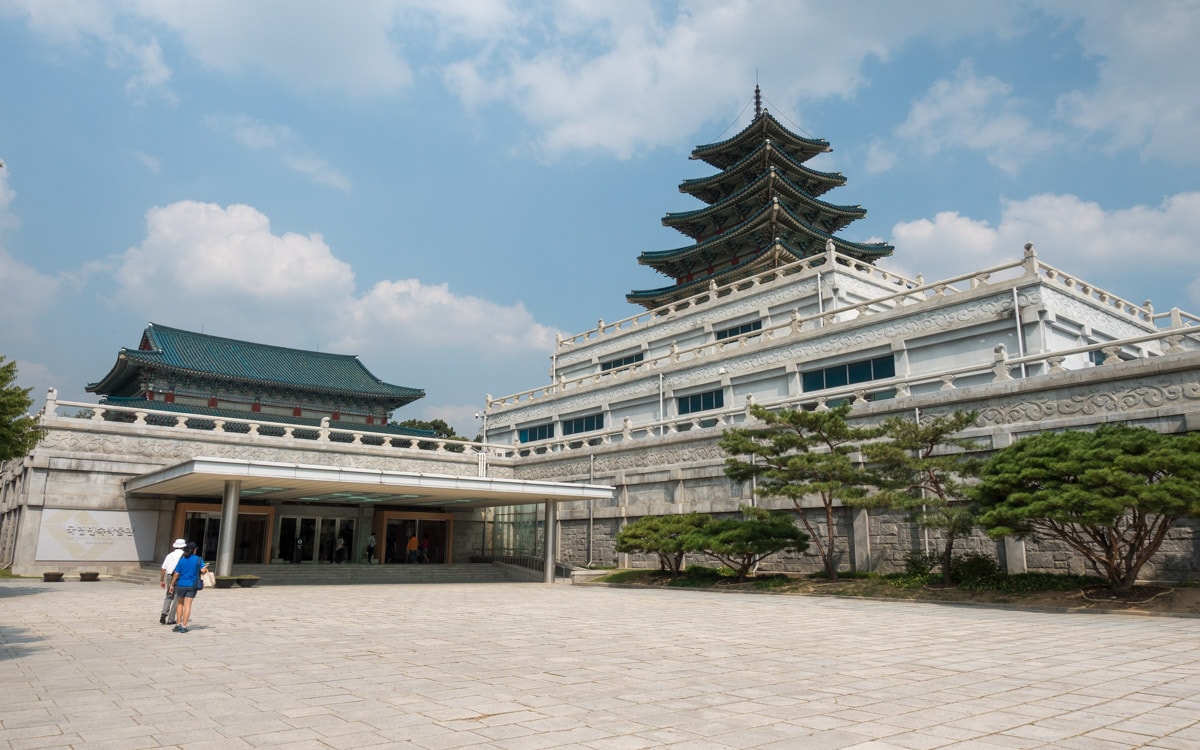
The National Folk Museum of Korea is a museum on the grounds of Gyeongbokgung Palace, not to be confused with the nearby National Palace Museum of Korea which is also found on the palace grounds.
The museum dates back to April 25, 1946. In 1975, the museum moved to the grounds of Gyeongbokgung Palace.
The museum moved to its current location on February 17, 1993. Today, it features over 4,000 artifacts on display which immerse visitors in the rich history.
Exhibits at this museum show the visitor how everyday citizens lived both past and present including the lifestyles and traditions of everyday Korean people during a time when the country was mainly agricultural.
Admission is free with Gyeongbokgung Palace ticket.
There is a free museum tour at 10:30 AM and 2:30 PM in front of Exhibition Hall 1.
Closed on Tuesdays.
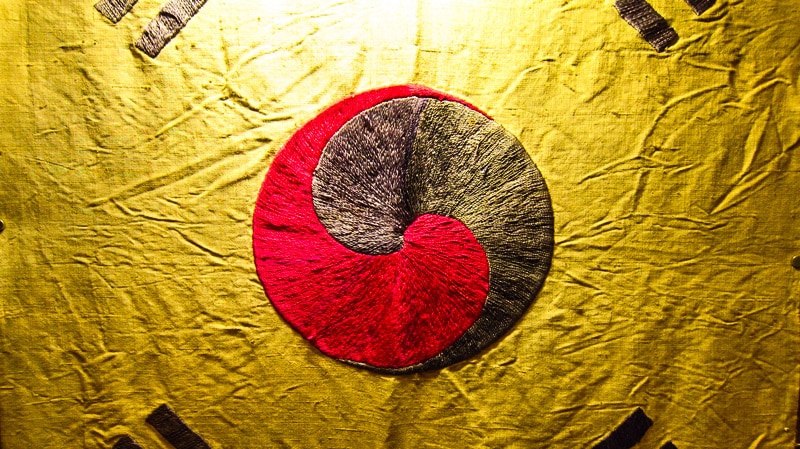
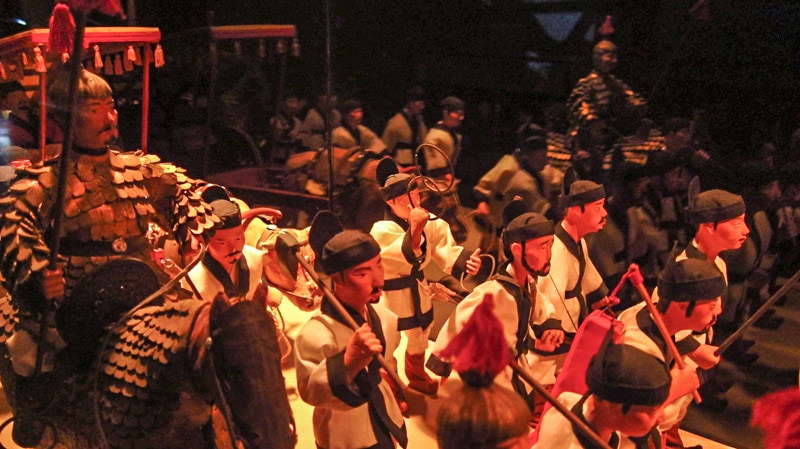
The museum features three permanent exhibits along with two special exhibits, an open air exhibition and a children’s museum.
Exhibition Hall I : History of Korean People
This hall displays both cultural and historical exhibits from the daily lives of the people. Visitors can learn about how technology and the spread of knowledge was used to evolve from the Paleolithic Age into the advanced country that it is today.
Exhibition Hall II : The Korean Way of Life
Visitors here can learn about the daily agriculture lives including how farmers prepared for each season and how they learned to use farming and harvesting tools, along with irrigation systems, to produce plentiful harvests that helped feed the country.
Exhibition Hall III : Life Cycle of Koreans
This hall traces the life of an upper class citizens from birth to death, including birthdays, education, marriage, families, and careers.
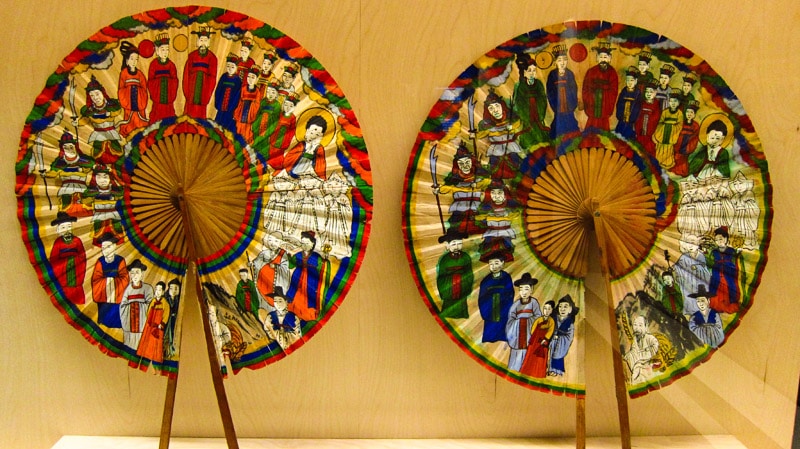
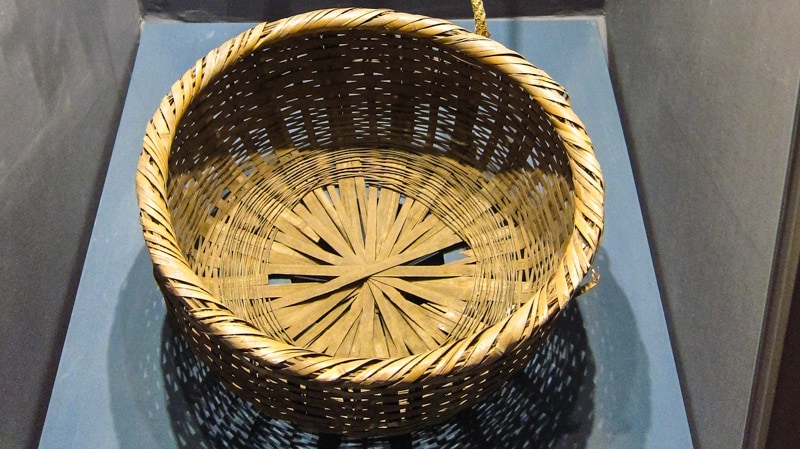
Open-Air Exhibition
On display in the open-Air exhibition is a Korean totem pole that was said to protect villagers, basalt statues from Jeju Island, a grinding mill, stone figures of civil and military officials, and a memorial pavilion.
Traditional Village : A Street to the Past
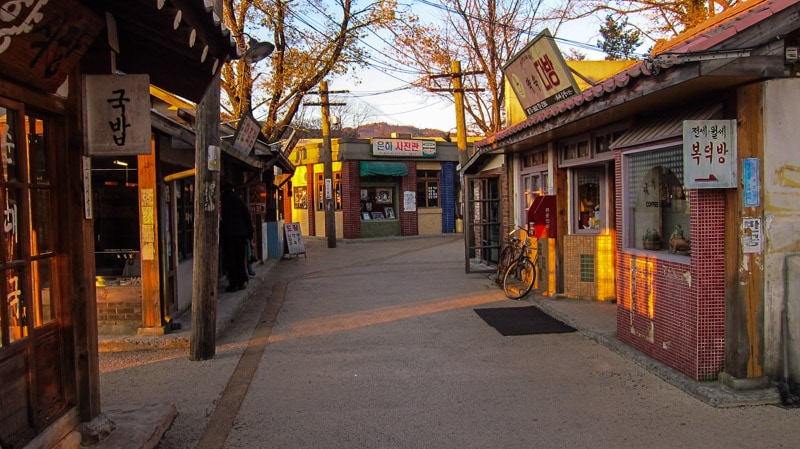
This part of the museum takes the visitor back in time to the late 19th century when a new modern culture was arriving in Korea. This replica of a street in a traditional village recreates what life was like at a time when electricity was first made available. Present here is a streetcar and hanok style buildings and stores for dry goods, herbs and medicine, bamboo goods, and a hat shop.
There is also a replica of a print shop that was used by newspaper and publishing companies from the 1930s to 1970s.
Children’s Museum
This part of the museum teaches both parents and children about the life, values, and wisdom of a traditional tale known as simcheong.
National Folk Museum of Korea Information
Hours
Admission
Free with Gyeongbokgung Palace ticket.
Address
37 Samcheong-ro, Jongno District, Seoul, South Korea
GPS Coordinates: 37.58182, 126.97899
How to Get Here
The National Folk Museum of Korea is located at the northeast corner of Gyeongbokgung Palace.
Option 1
Take Subway Line 3 to Gyeongbokgung Station (Exit 5).
Option 2
Take Subway Line 5 to Gwanghwamun Station (Exit 2).
National Folk Museum of Korea Video
Map
Nearby Sights
Bukchon Hanok Village
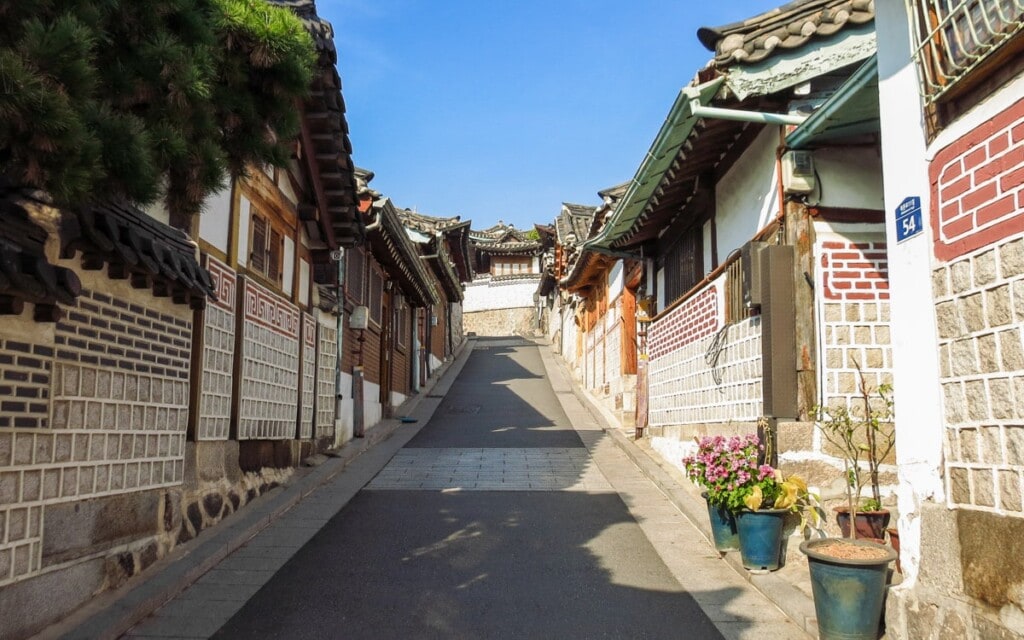
Bukchon Hanok Village is a historic village dating back almost 600 years to the Joseon Dynasty which features hanok or Korean traditional houses. Bukchon means "northern village." The quaint residential village lies in a hilly neighborhood north of Cheonggyecheon Stream…
Gyeongbokgung Palace

Gyeongbokgung Palace, located north of Gwanghwamun Square, is one of the most iconic sights in all of Korea thanks to its long and storied history. Construction on Gyeongbokgung Palace was completed in 1395 at the beginning of the Joseon Dynasty…
Baek In-je House Museum
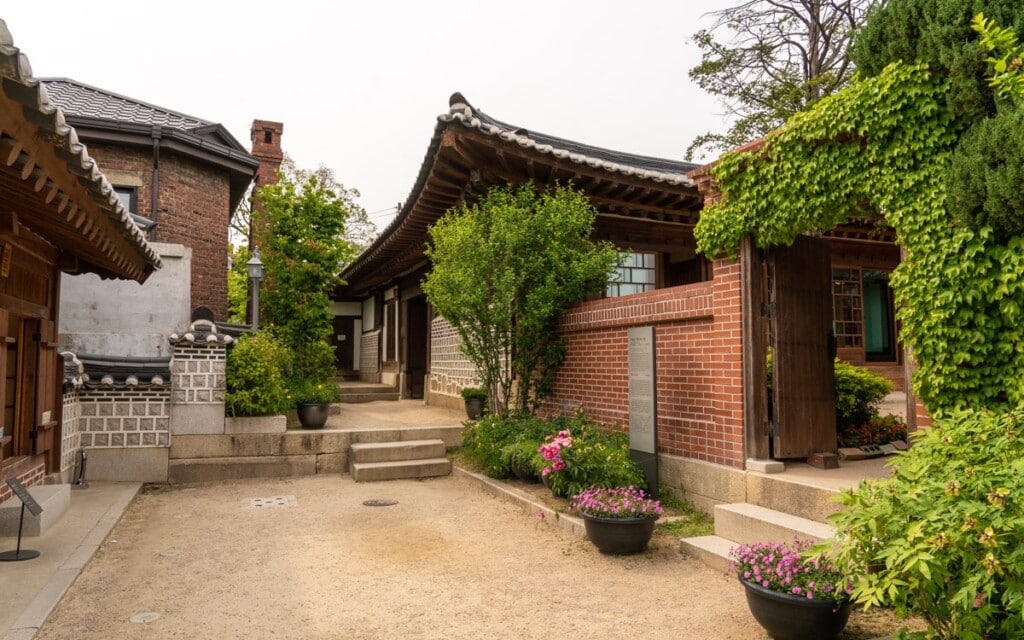
Baek In-je House Museum is a museum and cultural heritage site located in the Gahoe-dong neighborhood of Bukchon Hanok Village. Dating back over 100 years, the house is one of the finest examples of a modern hanok (traditional Korean house)…
Samcheong-dong
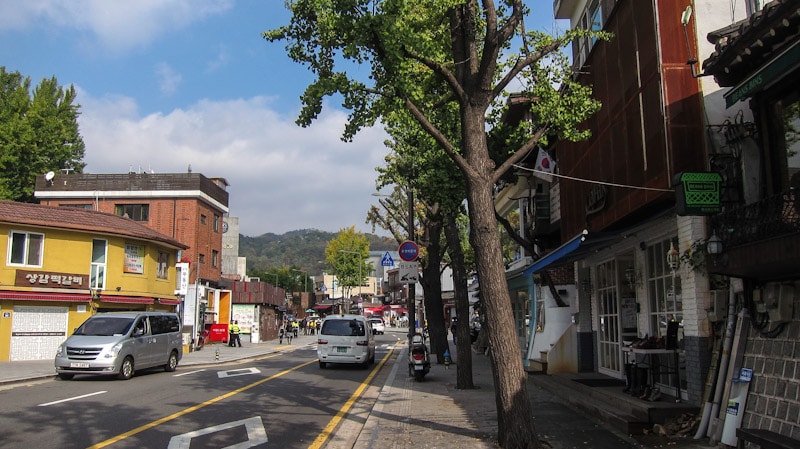
Samcheong-dongis an upscale neighborhood of Seoul that lies in a scenic area east of Gyeongbokgung Palace and Cheong Wa Dae (Blue House). The clean water and beautiful mountains in the area inspired the name of this trendy, youthful neighborhood. Surrounded…
Cheong Wa Dae (Blue House)
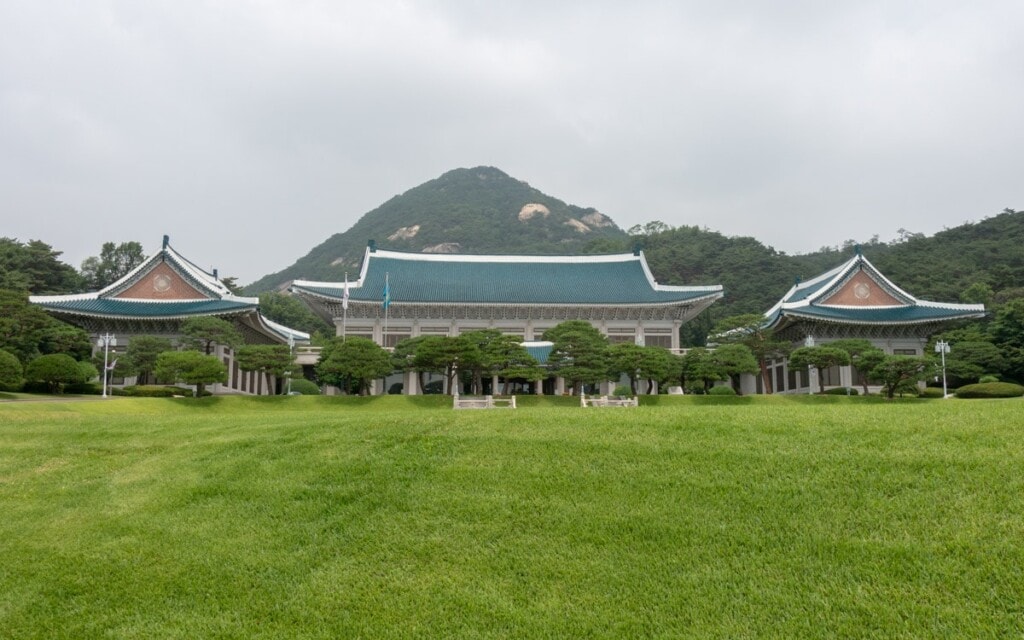
Cheong Wa Dae, or Blue House, is the official residence of the President of the Republic of Korea. It was built with traditional Korean architectural styles. The name comes from the translation of Cheong Wa Dae which means "pavilion of…
Last Updated on Mar 14, 2025
